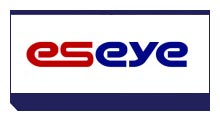
Posted to News on 15th Apr 2011, 15:52
Cost-effective machine-to-machine communications using GSM
Jon Severn, the Editor of MachineBuilding.net, recently met with Mark Lucas, the Sales Director of Eseye, to find out how machines and machine builders can benefit from machine-to-machine (M2M) communications using GSM technology.

Machine builders today have to think about far more than achieving the throughout specified by the customer. For example, there may be a specification for availability, the machine builder may be asked to provide a support service for a number of years - which could well exceed the lifetime of some components on the machine - and when selecting a supplier the customer is likely to consider not just the purchase price of the machine but also the cost of ownership.
Given that machine builders also want to make the most of their resources - and their engineers, in particular - it is essential to minimise the number of site visits. If machines are exported, then the time and costs involved in getting an engineer on site are even greater.
In theory it is straightforward to use an industrial Ethernet network to link the machine - or even individual components such as drives, PLCs and HMIs - to the outside world via a factory's LAN (local area network) and the Internet. However, there is a major problem here in that many IT managers simply refuse to provide access to the machine on their LAN as they perceive this to pose an unacceptable risk to the security of the IT network. So although the vendors of automation components have the technology available, it is often of no use to the machine builder.
Cost-effective alternative: GSM
Fortunately there are alternative ways to gain remote access to machines anywhere in the world, with a pricing structure that is very cost-effective compared with traditional modem-based systems, DSL lines or on-site engineers. For example, Eseye offers a system based around SIM (subscriber identity module) cards using GSM (second generation, 2G, mobile phone and data) technology. According to Mark Lucas, the Sales Director, what sets Eseye apart from other issuers of SIM cards is that it offers a complete end-to-end service (or customers can choose to make use of just the elements of the service that they need). Lucas also emphasises that although 3G is becoming the norm for mobile telephones, there are so many users of GSM technology that the infrastructure will remain in place for many years to come.
Depending on the application, Eseye can work with the machine builder to minimise the data that is sent (and, therefore, the cost of using the network). So whereas a machine builder might plan to send a machine's identifier code, its location, and the date and time - as well as the relevant performance or diagnostic data - Eseye can reduce that significantly because the SIM card has a unique identifier and the network provides the time and date data automatically when the data is transferred.
If the machine in question is manufactured in small volumes then it might be appropriate to install a standard modem module containing a conventional SIM card. However, for higher volumes, Eseye develops custom modules for embedding within the machine. And if space and weight are critical, then the module can have a chip SIM that performs the same function as a conventional SIM card but without the space and weight constraints associated with the usual packaging and gold-plated contacts.
Minimising costs
Whereas a machine builder might expect to sign a contract with a network provider, working with Eseye means there is no need to worry about which company actually provides the network service. Eseye works with all the major networks worldwide so can ensure that customers get the most cost-effective service and are assured of a signal at the machine - so long as there is a signal for at least one network. When installing the modem module or SIM, customers therefore do not need to worry about where in the country - or in the world - the machine is destined for. Furthermore, because Eseye works with networks around the world, the machine always uses a local network; this can be as much as two orders of magnitude cheaper than paying roaming charges for data.
Interestingly, on machines that do not need to send data on a regular basis, Eseye can configure the system so that the SIM is 'dormant' (and not incurring costs with a network provider) until such a time as an alarm is raised. Once the SIM is enabled it is temporarily granted access to the network for 24 hours. Although this mechanism is invisible to the machine builder, it is a good example of how Eseye takes every step it can to minimise costs for its customers.
Completing the end-to-end service, Eseye can also design and implement PDF reporting and/or web-based interfaces to enable customers to view diagnostic data received from machines or to interact with machines via a web browser. Indeed, this facility for bidirectional communications can prove invaluable if, for example, engineers need to run tests, update software, reconfigure the machine's settings or perform resets remotely. As far as the engineer is concerned, it is no different to communicating with the machine via an IP address.
As machines become more software-dependent and can be reconfigured in software to perform different roles, and as there is an increased demand for machine builders to provide 'manufacturing capability services' rather than simply selling machines, there is a corresponding rise in the importance of remote diagnostics, predictive maintenance and rapid responses to unplanned stoppages. Achieving all this without having to route data via a plant's LAN keeps IT managers happier and helps to reduce the cost-of-ownership for the customer as well as the supplier's cost to provide an ongoing service.
Areas where this type of M2M technology is already being implemented include medical equipment, white goods (dishwashers and washing machines, for example), banking systems and the automotive industry. In the manufacturing environment there are already industrial robots being equipped with GSM modules.
Follow the link for more information about Eseye products and services for cost-effective machine-to-machine data transfer using GSM.
Want the latest machine building news straight to your inbox? Become a MachineBuilding member for free today >>


















